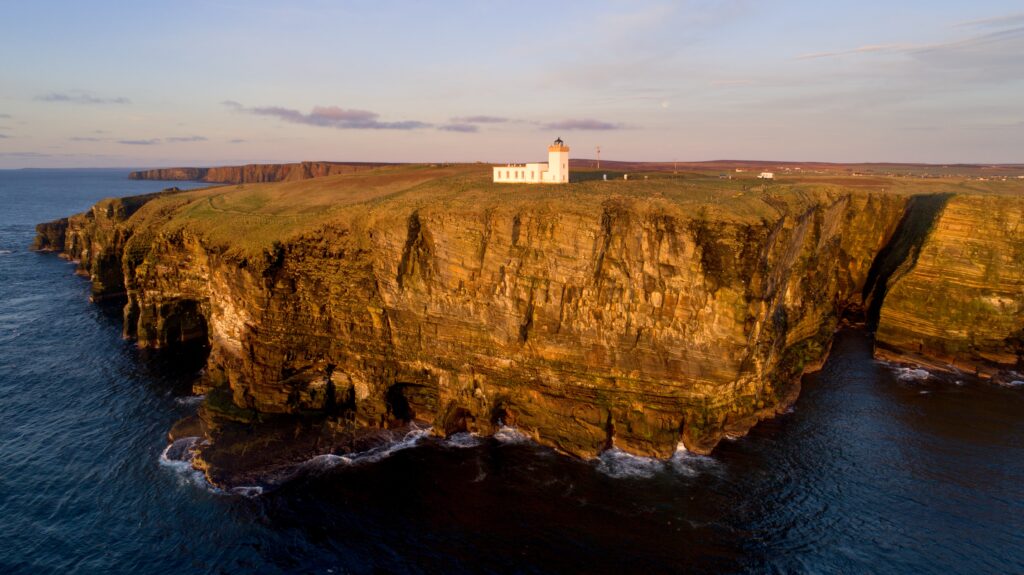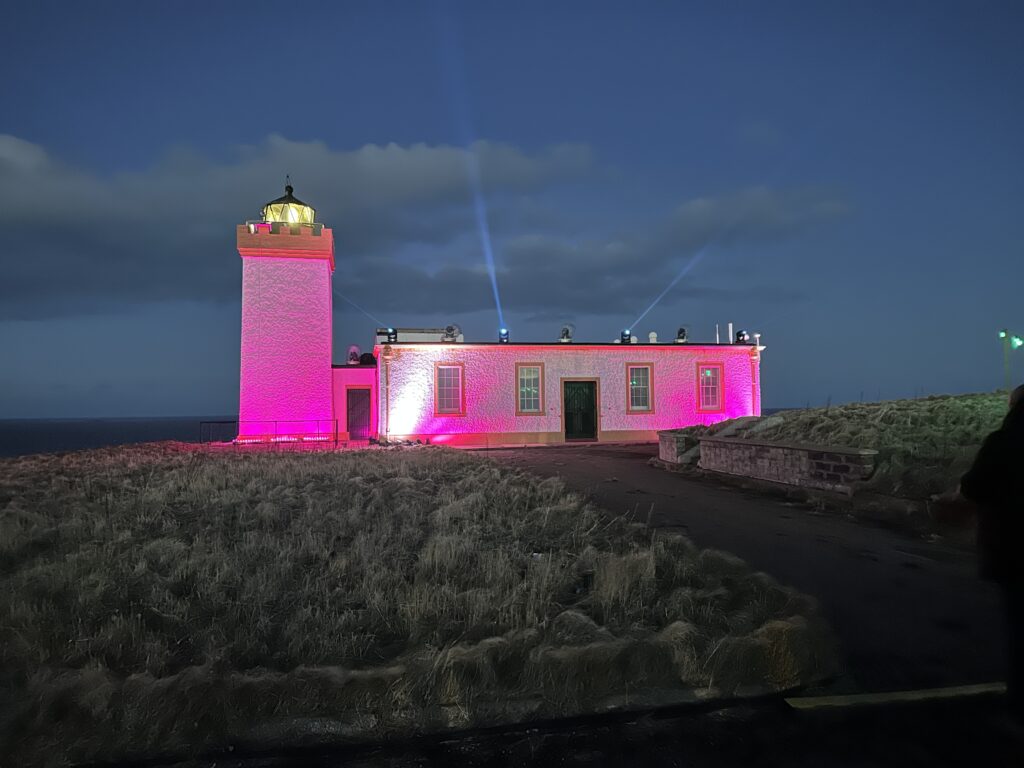Duncansby Head Lighthouse celebrates its centenary
On 15 March this year, Duncansby Head Lighthouse, situated in Caithness, Scotland, celebrated its 100th anniversary. The lighthouse was engineered by David Alan Stevenson and the light first shone out across the Pentland Firth on 15 March 1924.
To mark the centenary, the local community including the John O’Groats Development Trust, John O’Groats Book Festival, Lyth Arts Centre and Wick Voices, put together a celebratory weekend of events.
With talks by writers and experts on lighthouses, light shows screened on buildings, exhibitions about the history of the lighthouse, oral history recordings by former lighthouse keepers and their families and a school art competition, they made sure the lighthouse received a fitting celebration.
The centrepiece of the three-day celebrations was a special immersive film and lighting installation which saw the 100-year-old lighthouse come to life.
Mike Bullock, the Northern Lighthouse Board’s Chief Executive was at the celebrations and said: ‘This is such a special event and it is a great honour for us to be part of it. It’s really exciting for us that the community has come together.
‘The Northern Lighthouse Board was all about community. It brought jobs to the area, it brought people to the area, it brought youngsters to the school.
‘Obviously things have changed in the service. We no longer have lightkeepers, but we do have dedicated professional technicians and engineers who look after these stations.’
History
1914: A temporary fog signal was established at Duncansby Head. This was replaced with a permanent fog signal following the end of the First World War.
1924: The light tower was designed by and constructed under the supervision of David Alan Stevenson.
1939-1945: During the second World War, Duncansby Head Lighthouse was machine-gunned by a German bomber, though there were no injuries or damage.
1953: In 2016, the Sunday Post newspaper reported that nuclear testing at the site had been proposed by the Atomic Weapons Establishment (AWE) during the early stages of the Cold War.
1968: A high-power RACON (radar beacon) was installed. This was later replaced with low-power Differential Global Positioning System (DGPS).
1997: The light was fully automated.
2005: The keepers’ cottages were replaced with a smaller structure during extensive renovations.
2024: Duncansby Head Lighthouse celebrates 100 years of operation.
For more information
For more information readers are invited to see here: https://www.nlb.org.uk/lighthouses/duncansby-head
Based on material kindly provided by Fiona Holmes, Communications Officer, Northern Lighthouse Board.


Photo: Ian Cowe. ©.
